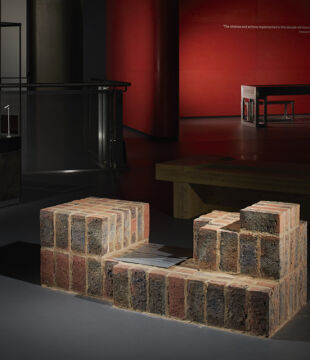
Details
Location: London
Brick Manufacturer: Ketley Brick Company Ltd
Brick Name: Staffordshire Blue
Architect: dRMM
Brickwork Contractor: AVV Solutions
About the project
Project Introduction
Silvertown Tunnel is a twin bore 1.4km road tunnel with two lanes in each direction including dedicated bus lanes. This tunnel is to relieve congestion on the Victorian-era Blackwall Tunnel and construction has taken just under five years to complete. This major development intended to:
• Reduce congestion, delays and queues crossing both sides of the river
• Offer more opportunities to cross the river by public transport
• Increase business access to new markets on both sides of the river
• Help manage air quality impact of traffic congestion on some of London's busiest roads
• Improve resilience of the road network
• Offer a cross-river cycle shuttle service for cyclists.
Part of the project involved the construction of two Portal Control and Support buildings to enable the tunnels’ operation. These buildings form the visual legacy for the surrounding areas.
Design Concept
At Developed Design stage, dRMM proposed brick articulation to areas of the façade to create prominent architectural brick landmarks at both ends of the tunnel, serving as gateway markers of strategic infrastructure importance and housing essential services and workspaces for the tunnel operator. Each portal building was given a distinct, yet complementary shape united by the articulated Flemish bond brickwork, creating a chain-link effect across the facades.
The southern Greenwich Portal has a curved façade constructed from Staffordshire Blue double bullnose engineering bricks laid in a Flemish bond with recessed headers and joints.
The northern Silvertown Portal has a conical beacon-like copper characteristic supported by a brick plinth constructed from plain rectangular and double bullnose engineering Staffordshire Blue bricks with recessed headers and joints, also in a Flemish bond.
This added interest to façade areas that were without fenestration, particularly when emphasised by natural and artificial lighting. There are several historical and contemporary residential and public brick buildings in Greenwich and Silvertown and the material choice for the new buildings aimed to contribute to the local context by continuing this architectural language.
Brickwork Selection and Orientation
Standard dimension brickwork provided a robust finish requiring little maintenance - ideal for infrastructure and provided a common monolithic language for the buildings.
Standard double-bullnose brick forms the stretcher in a standard Flemish bond, with recessed headers and joints together with CPI’s EuroMix black mortar allowed the brickwork to follow the buildings curved geometry effectively while articulating the surface to discourage graffiti. The double bullnose stretcher is utilised only where required by the curvature or emphasis to entrances, openings reveals and corners, while below DPC level the bond is used without any articulation to provide a simple waterproofing connection.
Ketley Class A engineering bricks were selected, due to being robust and resistant to water ingress, making it ideal for use at ground level and in articulation. These are the only bricks to be independently tested for freeze-thaw performance within a textured façade with projections up to 50mm, hence the most suitable option for the recessed headers and joints, where water sitting on the projecting stretchers surface could cause frost damage to standard facing bricks.
Sponsored by IG Masonry Support

At IG Masonry Support, we have combined experience with innovation to design and manufacture the most practical and advanced range of stainless steel masonry support products and revolutionary brick slip soffit systems for the construction industry.
We provide comprehensive technical support for all of our products. Our free scheduling and specification service offers a fast and accurate turnaround on Masonry Support, Windpost and Brick on Soffit Systems. Our experienced team of over forty structural and civil engineers offer a free design service and on-site support for a range of off the shelf and bespoke solutions.
















